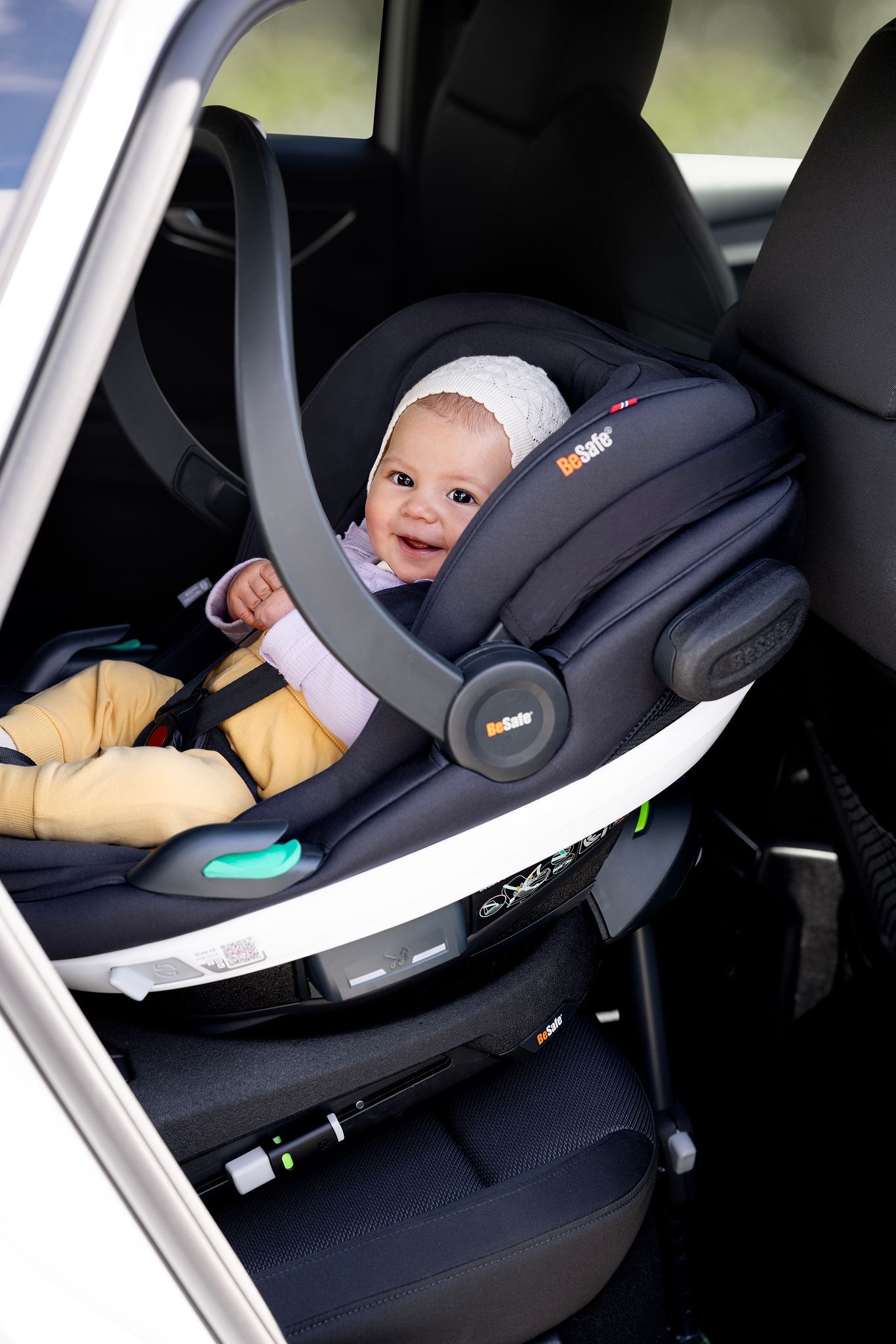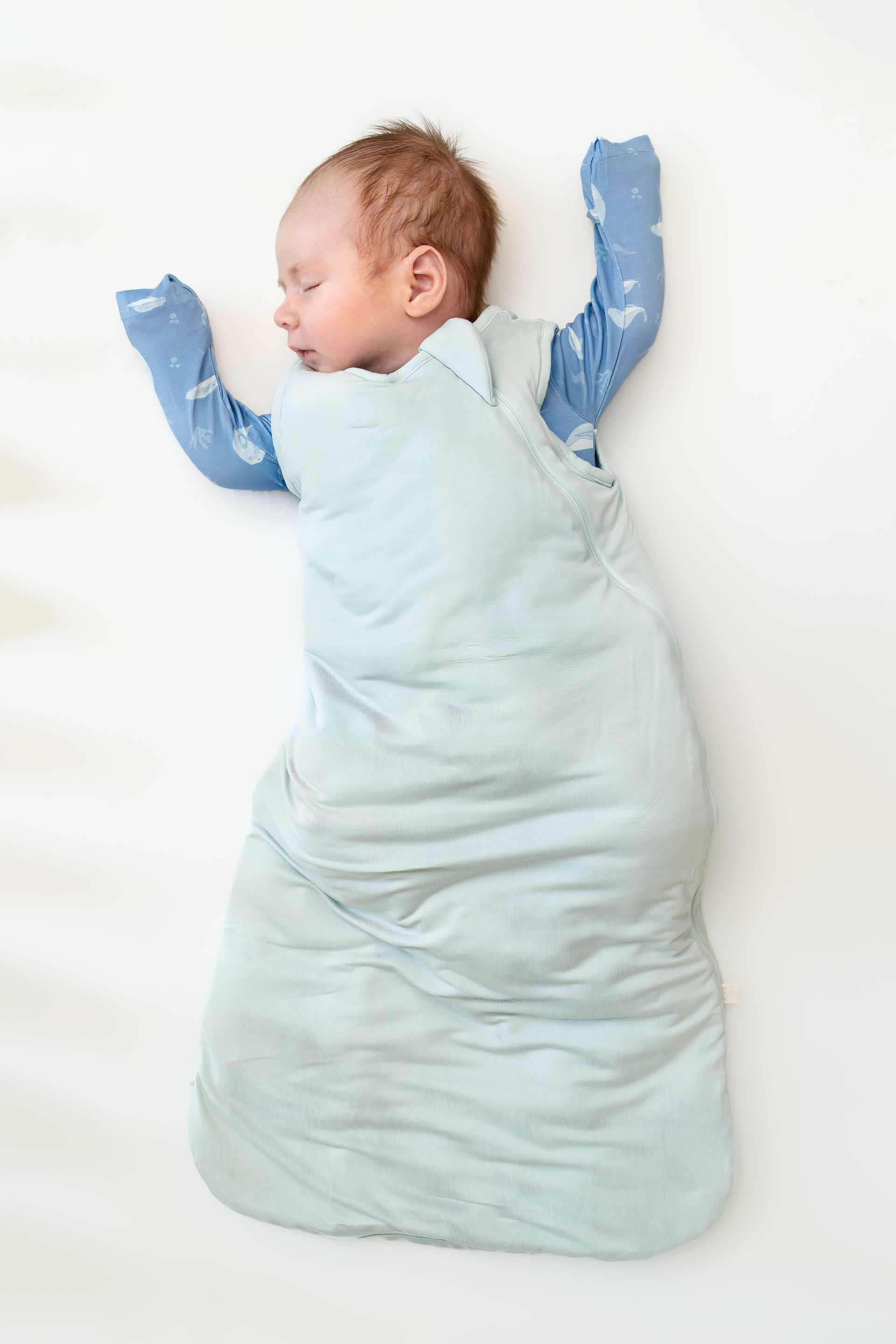The What, When, and How of Toddler Clocks
lbenjell • December 26, 2022
There are many products on the market that claim they will help solve your child’s sleepless habits. Honestly, many of those products don’t get to the root of the issue and only serve as a temporary fix.
Really, when it comes to solving your child’s sleep struggles, it comes down to finding the right approach for your family and staying consistent with your expectations.
Through the years, I’ve come across many products that claim to help with sleep, and I’m happy to share one today that actually can help while reminding your toddler of your expectations.
It’s an extremely underrated tool that many families might not know about: a toddler clock.
Maybe you have heard about this device, but you don’t understand what the benefits are.
Or maybe you have one, but you’re not using it to its full potential.
In any case, this blog is for you. We’ll be going through the what, when, and how of using a toddler clock so that you can help your little one get the sleep they need.
What are toddler clocks?
Toddler clocks are similar to alarm clocks, but instead of ringing, they simply change colors (or have open/closed eyes) to indicate time. For many young children, telling time is not yet a mastered skill, even with a digital clock. So telling your toddler to stay in bed until 7 a.m. can have very little meaning to them.
Further, because it’s normal for children to wake throughout the night, if they don’t know what time it is, they may fully wake up or go into their parents’ room, thinking it’s time to get up for the day.
However, when a clock changes colors, or a character on the clock has open or closed eyes, your child can understand the concept of waking up or staying in bed.
When I’ve worked with families, I’ve seen toddler clocks fix issues like early morning wakes and also helping children feel more comfortable staying in their bed until it was time to wake up, so this device can be a great tool to introduce to your toddler!
When should I introduce a toddler clock to my child?
There are two great times to introduce a toddler clock to your child’s routine.
- When there is a problem you want to solve.
- Before a problem even arises.
Obviously, if there’s an issue with your child’s sleep habits, like early morning wakes, bringing in a toddler clock can help them understand that the time they’re getting up isn’t time yet.
But these devices can also be used preventatively, even before you transition your child from their crib to their own bed. In fact, introducing it early can help it become part of their bedtime process.
If possible, I’d recommend bringing in a toddler clock before you get to any issues, because it can help prevent situations from arising. Additionally, it can serve as a cue – when it’s time to begin the bedtime routine, you can set the clock to change colors, alerting your child that it’s time to end their playtime and wind down.
How do I use a toddler clock to its fullest potential?
Once you know that introducing a toddler clock to your little one is something that would benefit your family, it’s time to teach your toddler how it works.
And sometimes, this can take time.
Here’s my recommended steps for using a toddler clock to its fullest potential:
- Take time to learn the ins and outs of the clock. Read the manual, watch videos online, or read blog posts that go into detail about the clock. The last thing we’d want is to get your child excited about something that they can’t use right away.
- Give your toddler ownership of the clock. You can wrap the clock or gift it to your child, but this is a time to get excited about this new item. Make it a big deal. Further, there are so many toddler clocks on the market, so if your child is obsessed with a certain character or item (like a traffic light), see if you can find one related to their interests. This will help engage your child and entice them to “buy in.”
- Show your child how their new clock works! This will depend on the clock that you use, but sit down with them and explain each feature. If the clock changes colors, you can explain that when it’s time to sleep, the light will be red, and when it’s time to wake, the light will turn green. Of course, you can show them what each color looks like so that they fully understand. Feel free to get creative with your teachings and make up sayings or songs like, “When the light’s red, it’s time to stay in bed.”
- Give your child time to learn and recall the rules. It won’t be perfect right away, and that’s okay.
A few other tips I’ve learned along the years of using toddler clocks:
- If possible, introduce the clock to your child when they’re still in their crib. That way, when they move to their bed, the clock will serve as a constant for them and prevent them from getting out of bed when it isn’t time.
- If the clock is introduced because of a problem, like early morning wakes, set the clock to turn on at the time your child is waking (i.e. 5 a.m.). This way, when they wake up and see that it’s “time,” they will get excited and feel as though they’re doing something right. After they’ve bought into the clock, you can add 10-15 minutes every few days until the clock is set to the ideal wake time. Waiting 10-15 minutes is much more manageable than waiting 2 hours, so take it slow if needed.
Again, any time you introduce something new to your child regarding expectations, it’s a good idea to head into the process with a patient mindset. It’s going to take time for your child to understand their new clock and for them to uphold the rules you’ve set.
Stay consistent and find ways to celebrate your child when they meet those expectations, and soon, you’ll have a toddler who is excited to use their clock each day.
If your toddler is struggling with sleep and you don’t feel a toddler clock is the right fix, reach out to me. Together, we can make a personalized plan for your family to get sleep back on track!

Choosing a car seat is one of the most important decisions you’ll make as a parent. It’s not just about convenience — it’s about giving your child the best protection on every journey . In the UAE, where we drive long distances, face busy roads, and deal with extreme heat, the right car seat matters more than ever. But with so many options, how do you know which one to choose? Here are our top 4 tips to make car seat shopping easier — and safer. 1. PRIORITIZE SEATS THAT UNDERGO THE TOUGHEST CRASH TESTING Not all car seats are created equal. Many parents think if a seat is “legal,” it must be safe — but that’s not always true. ECE R44 : The most basic standard, now phased out in Europe. ECE R129 (i-Size) : Stricter testing with better head, neck, and side-impact protection. The Swedish Plus Test : The toughest crash test in the world — and the gold standard. What makes the Swedish Plus Test so important? It’s the only test that measures neck forces on a child’s body in a crash. Seats that pass prove they can keep neck loads below dangerous limits — a key factor in preventing serious injury. Many car seats fail completely under this extreme test, which shows just how high the bar is. 👉 If a car seat has passed the Swedish Plus Test , you can be confident it offers the highest level of safety for your child. 💡 Remember: Legal does not always mean safe . Go beyond the minimum. 2. CONSIDER YOUR CHILD'S HEIGHT, WEIGHT, AND AGE — EVEN THE SMALLEST ONES Every child grows differently, and size matters when it comes to safety. Preemies and smaller babies : Standard carriers often don’t provide the right fit. They need extra support for the head, neck, and body, plus proper harness positioning. Twins or multiples : Planning seating for two (or more) at once requires careful choice so every child gets the safest setup. As children grow, their height and weight percentiles determine how long a seat will last. We recommend car seats with at least a 25kg weight limit and 125cm height limit , which allow for extended rear-facing travel . Why rear-facing ? Research shows it is up to 5 times safer than forward-facing for children up to 6–7 years old. Better crash force distribution across the strongest part of the body. Superior head and neck protection , preventing the whip-forward motion that can cause spinal injury. Cocoon-like shell protection against front and side impacts. 💡 Bonus for UAE parents: The BeSafe Go Beyond with Preemie Inlay was designed with neonatal nurses to support even the tiniest babies. It features a removable wedge for better harness fit and breathable mesh fabric — keeping your baby safe and cool in our hot weather. 3. MATCH THE CAR SEAT TO YOUR CAR AND LIFESTYLE Your car seat needs to fit not just your car — but your daily routine . Multiple cars? Choose a seat that’s easy to install/uninstall. Growing family? Invest in a seat with a long lifespan that can be passed down. Seat placement? Consider if it will go behind the passenger, in the middle, or side by side with another child seat. Bigger families? Narrow but safe seats can fit 3-across or work well in 7-seaters, without compromising protection. Example from our family setup: Mummy’s car : BeSafe Flex Fix 2 for Sofia (8y) + BeSafe Stretch for Leo (5y). Daddy’s car: Axkid One3 for Leo + BeSafe Flex Fix 2 for Sofia. The Axkid One3 was chosen because Daddy often removes the seat, and installation takes under 30 seconds . 👉 Key takeaway: The “best seat” isn’t the one your friend uses — it’s the one that fits your child, your car, and your lifestyle . 4. DON'T COMPROMISE — BUY FROM A CHILD CAR SEAT SPECIALIST Buying from a specialized retailer ensures peace of mind: They recommend a seat that fits your child, car, and routine . They install it correctly and show you how. If the seat doesn’t fit, they won’t install it — and they’ll help you find one that does. They’ll reinstall it whenever you need , for example when changing cars, at no extra cost. At Safety On Board , we offer 1-1 car seat consultation and hands-on support to make sure your child rides safely every time. FINAL THOUGHTS A car seat isn’t just another baby item — it’s life-saving equipment. Whether you’re bringing home a preemie, juggling twins, or moving a big kid into a booster, the right seat + the right suppor t makes all the difference. If you’re unsure where to start, contact us and book a consultation with us. We’ll help you find the perfect fit for your child, your car, and your family. Because every child in the UAE deserves the safest ride 💛 Sophie Huang is the founder of Safety on Board , the UAE’s first child car seat specialist. She is also a mom of 2 and an internationally certified car seat expert . With a passion for keeping children as safe as possbile on UAE road, she guides parents in choosing and installing the safest car seats. Sophie believes safety can be simple, stress-free, and empowering for every parent.

There’s something magical about a beach holiday — the sound of waves, salty air, and the promise of slow days in the sun. But let’s be honest: traveling to the beach with a baby isn’t exactly a vacation unless sleep is part of the equation. Whether you're heading to a resort, renting a seaside villa, or visiting family by the coast, here’s how to set your baby up for restful sleep — so everyone gets to enjoy that ocean breeze. Step 1: Know That Sleep Needs Don’t Take a Holiday Babies are creatures of habit. Their little bodies thrive on rhythm and predictability — even on vacation. But that doesn’t mean you can’t have fun or go with the flow! It just means that your baby’s sleep needs are still there, and the better prepared you are, the easier it will be to keep things (mostly) on track. Step 2: Your Beach Baby Sleep Packing List Here’s your ultimate baby sleep packing list for a beach trip, broken down by category: Sleep Environment Essentials : Portable travel crib or bassinet – Choose one your baby is already familiar with if possible. Fitted sheets – Bring 2-3 just in case of sand, spills or spit-up. Also bring a gently used one to remind baby of home as he/she adjusts to the new sleep environment. Portable blackout blinds – Beach homes and rentals often have light, sheer curtains. White noise machine or app – Helps block out unfamiliar sounds like waves (yes, they can be loud!) or street noise. Baby monitor (if you’ll be in a larger space or stepping outside during naps). For more on the ideal sleep environment, have a read here . Comfort + Routine : Lovey or comfort object (if age-appropriate and safe for sleep). Sleep sack – Choose a breathable, summer-weight one. Favorite bedtime book – Familiarity brings comfort. Pacifiers – Always bring extras! Nightlight – A soft, warm one if needed for feeds or changes during the night. Weather + Climate Considerations : Lightweight, breathable pajamas – Think cotton or bamboo Fan – If your rental lacks good airflow or AC Bonus Tip: Have a “Nap-on-the-Go” Kit **For beach days that cut into nap time: Clip-on stroller fan Stroller or baby carrier your baby can sleep in Portable white noise machine Extra sun hats + baby-safe sunscreen (for after 6 months old) Step 3: Keep the Routine (Even on the Coast) Try to mirror your bedtime routine as closely as you can. If you usually do bath → PJs → book → feed → sleep, stick with it — even if it’s a quick version. Babies love the predictability, and it helps signal that it’s time to wind down, even in a new environment. Also, aim for naps in a darkened room when possible, especially after a stimulating beach outing. And if one nap has to happen in the stroller under a palm tree? That’s totally okay. Just go back to the routine as soon as you can. Getting There: Travel Day Tips Time your departure around naps if possible Use familiar sleep items (like the sleep sack or pacifier) during flights or drives Offer extra feeds — travel is dehydrating, especially in hot weather Keep expectations flexible – sleep may not be perfect, and that’s fine Beach trips with a baby can be full of joyful memories and restful nights — as long as you plan for sleep. With the right gear and mindset, your little one can stay well-rested and content, giving you more time to soak up the sun (or at least drink your coffee while it’s still warm!). And remember: sleep doesn’t have to fall apart just because you’re away from home. If you ever feel stuck or unsure about how to adjust things before, during, or after a trip, I’m here to help you build a personalized plan that fits your family’s travel style. Book your discovery call here .

October is SIDS Awareness Month, dedicated to raising awareness about Sudden Infant Death Syndrome. It’s a time to educate parents and caregivers on safe sleep practices that can reduce the risk and help protect our little ones.. At Hushabye, safety is at the heart of our brand. Our focus is on providing parents with safe and high-quality baby sleepwear, such as sleep bags, that offer a safer alternative to traditional blankets. What is a baby sleep bag? A baby sleep bag, also known as a wearable blanket or sleep sack, is a specially designed garment for infants and young children to wear during sleep. The primary purpose of a sleep bag is to keep the baby warm and comfortable, but it also serves as a safe and convenient alternative to traditional blankets and quilts in a crib or cot.


